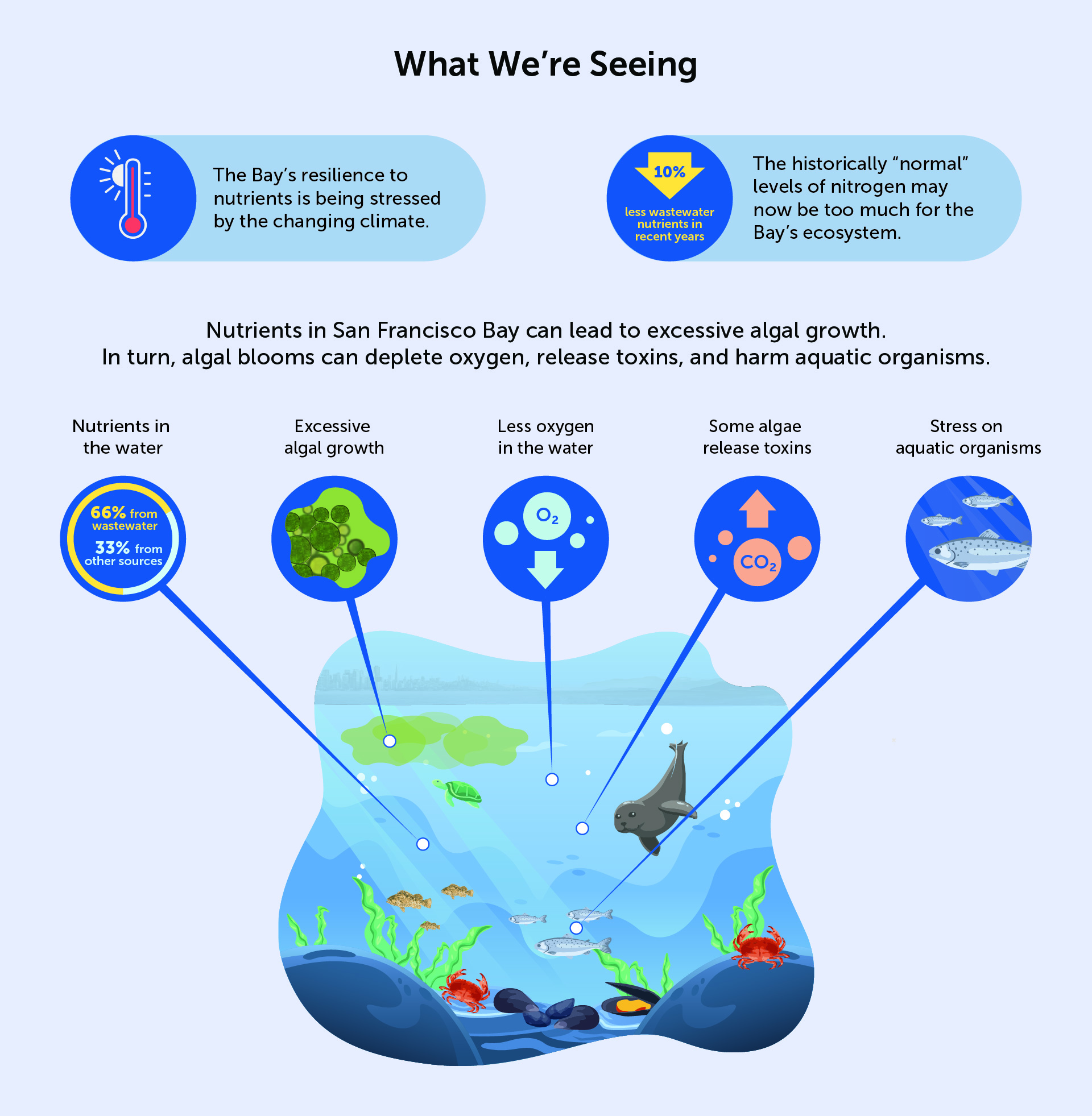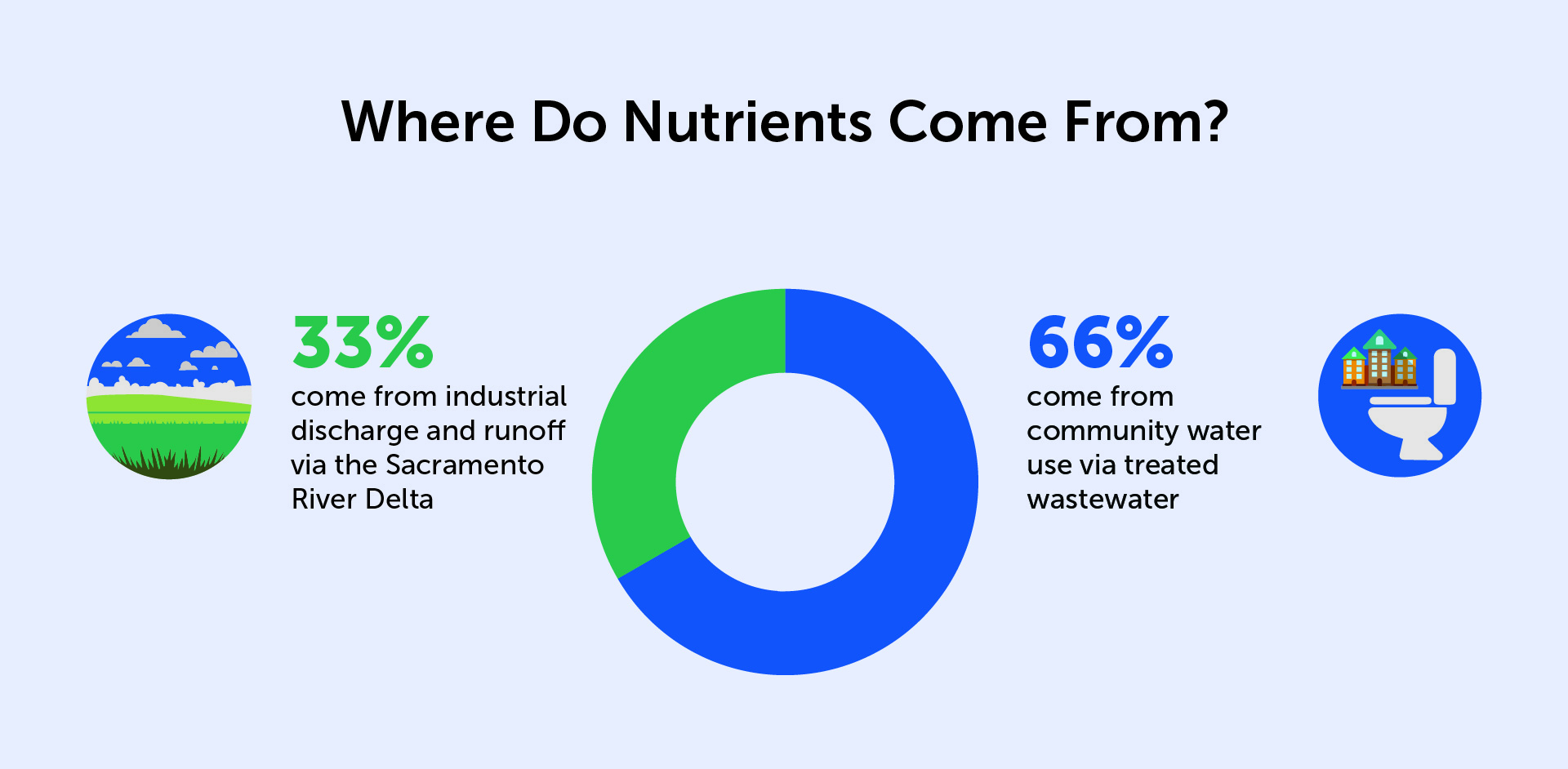Scientists don’t know what starts an algal bloom, but once initiated, they are fed by an abundance of nutrients, like phosphorus and nitrogen, in a body of water. These elements are natural parts of aquatic systems, but in large quantities can cause excessive algal growth which depletes oxygen in the water and can cause harm to aquatic organisms. Some types of harmful algal even release toxins which can be harmful to humans and pets.
In 2022 and again in 2023, harmful algal bloom events occurred in the San Francisco Bay. Nitrogen, which naturally occurs in treated wastewater, provided “food” for the algal species, Heterosigma akashiwo, which led to levels of growth not previously seen. This particular algae produces toxins harmful to fish and as the algae dies off and decomposes, oxygen in the water is depleted, causing more harm to wildlife.

Where do Nutrients Come From?
Algae are plants and nutrients are the fertilizer that allows them to grow. Nutrients end up in our Bay Area waterways from stormwater and industry, runoff from agriculture, and from wastewater from the millions of households around the Bay Area. When you flush a toilet that water (called wastewater) flows through sewers to one of 40+ wastewater treatment facilities in the Bay Area, where it is treated before being discharged into the Bay. While all wastewater treatment facilities meet robust, science-based standards for treating wastewater, the wastewater that is discharged still contains some amount of nitrogen – mainly from human urine – which is now negatively affecting the health of the San Francisco Bay.
While we do not fully understand what causes algal blooms, they are an important reminder that the San Francisco Bay’s historic resilience to nutrients is being stressed by the changing climate. The levels of nutrients discharged to the Bay from wastewater treatment facilities have been reduced by more than 10 percent in recent years, but these historically “normal” levels of nitrogen may now be too much for the Bay’s ecosystem.

What Clean Water Agencies Are Doing About it
For more than a decade, Bay Area Clean Water Agencies have been investing in scientific research to better understand the impacts of nutrients to the Bay while concurrently developing planning tools to support reducing nutrients discharged to the Bay. 14 of the 40+ Bay Area wastewater treatment facilities have made upgrades to enhance nutrient removal and many others are in the planning stages of upgrades.
Nutrients are regulated via a Watershed Permit administered by the San Francisco Regional Water Quality Control Board. An updated Watershed Permit was adopted in 2024 and will require a 40 percent reduction in summertime nitrogen discharges across wastewater treatment plants around the bay.
This is a regional issue that clean water agencies are tackling in a coordinated way. The watershed permit will affect every service area, and all will need to respond through infrastructure improvements.
Where possible, our members are pursuing innovative technologies that can have benefits like lower costs, reducing the footprint for treatment, reducing greenhouse gas emissions, or improving water quality for recycled water.

What’s Next?
Additional investments are necessary to remove nutrients in a way that minimizes cost and maximizes benefits to the community.






